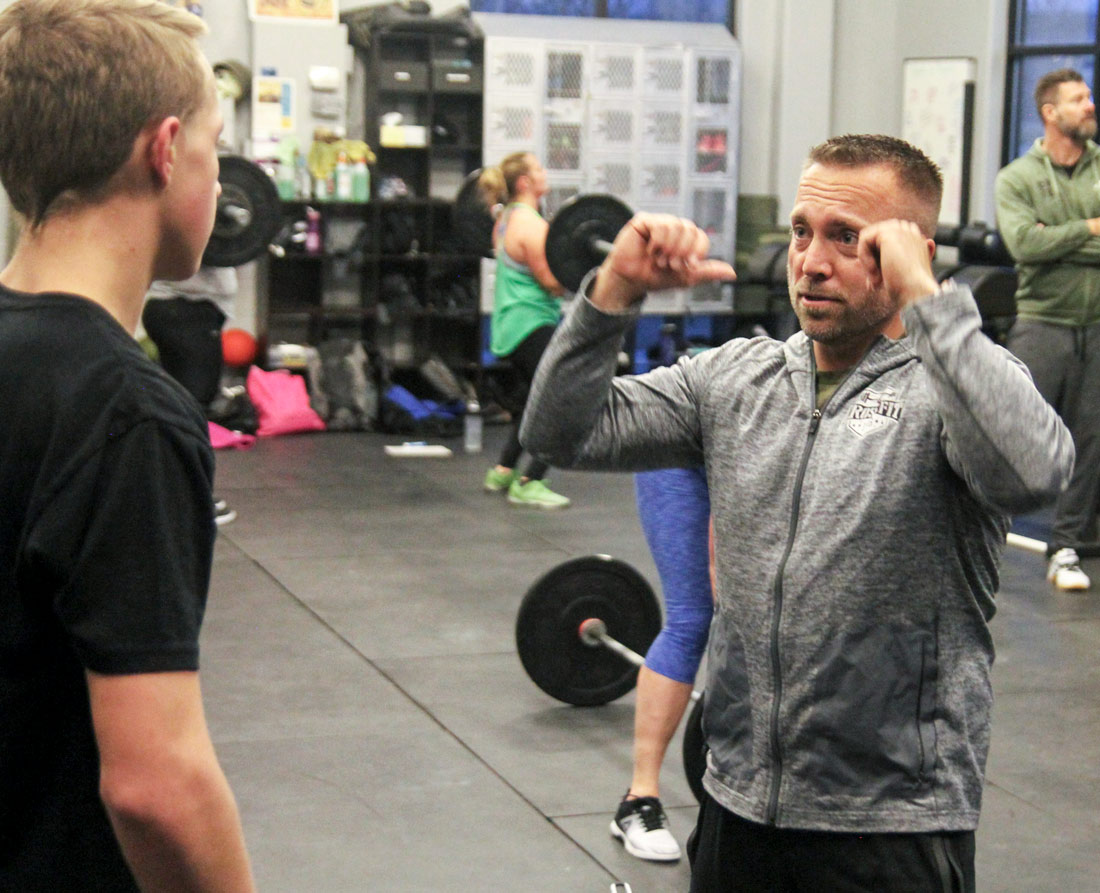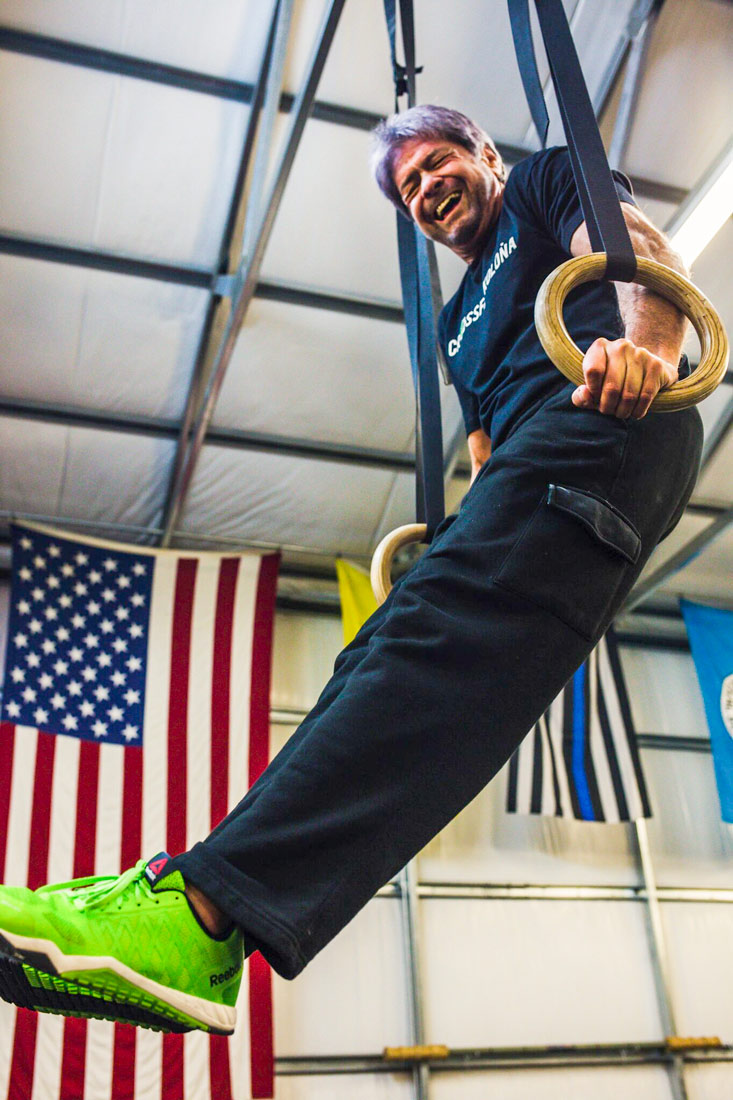Modifying workouts—scaling—is the foundation of CrossFit.
Coaches take a challenging workout prescription and alter it so each individual can work at his or her level and become healthier and fitter. It’s been happening since Greg Glassman invented the program, and scaling came to the Open in 2015 as a way to enable more people to participate. As of Jan. 2, CrossFit.com is offering options and modifications to help athletes get the most out of the daily workout.
For athletes who clearly have or do not have the appropriate levels of strength, skill and conditioning, the path is clear. But what about athletes who are close to those levels or athletes on the verge of a major breakthrough? And what about athletes whose egos tend to influence their decisions?
Here’s exactly what coaches and athletes need to know to make the right decision about whether to scale the Open workout each week.
How Does Scaling Work?
The Open started in 2011, and as the sport progressed, the skills and loads needed to test the best athletes in the world became more difficult for the average person to handle. For example, a 265-lb. snatch was needed to find out Ben Smith was 12 seconds fitter than Jeff Evans on Workout 17.3. The introduction of the scaled versions of Open workout in 2015 allowed more people to compete, which is what the Open is all about, Director of the CrossFit Games Dave Castro explained in this video.
A few things to note about Open scaling:
- An athlete may finish the Open with a final ranking determined by a combination of scaled and prescribed workouts.
- An athlete who chooses to perform a scaled workout will be ranked on the Leaderboard relative to all other athletes who performed the scaled version of that workout but below all athletes who performed the workout as prescribed.
- If an athlete performs any workouts as prescribed, he or she will remain on the competitive Leaderboard.
- The Open also features a scaled-only Leaderboard. In order to remain on the scaled-only Leaderboard, an athlete must perform all the Open workouts scaled.
- An athlete’s score from a scaled workout cannot contribute toward a team’s score. However, an athlete who performs scaled workouts is still eligible to participate on his or her affiliate’s team as long as the athlete meets all the eligibility requirements.
On the Bubble?
Some would rather submit a score of 1 rep as prescribed than modify the workout and preserve its intended stimulus. Yes, it’s true: A score of 1 Rx’d rep ranks higher than a scaled score of 300, but most coaches agree that ego is the only reason to submit a score of 1. If an athlete is happy to submit a score of 1 and can safely do so, there’s no problem, but if ego-driven athletes are inclined to attempt skills or loads well above their level, it’s up to a coach to step in and make the right call.
Other athletes find themselves in the gray area between the scaled and prescribed workouts. What’s the right choice for an athlete who can squeak out a muscle-up or two on a good day? And what about someone who’s getting close to a first muscle-up and might just nail it in the Open?
Dana Soprano, owner of Seven Valley CrossFit in Cortland, New York, said it’s best to discuss personal goals with athletes who are on the fence.
“What do you want to get out of this workout tonight?” Soprano said she asks her wavering athletes. “If the thought of getting their first chest-to-bar (pull-up) is more exciting to them than doing the workout scaled, then I would advise they go for it.”
She added: “The adrenaline is through the roof and thus (it’s) a perfect environment to do something you've never done before. If an athlete's goal is to get a muscle-up and they've been working on lots of gymnastics pulling, pushing, skill-transfer exercises, … then the Open creates the perfect environment for it all to come together.”
Jeremy Evans, owner of CrossFit 1976 in Eagle Mountain, Utah, takes a similar approach: It’s a personal decision he leaves up to the individual athlete, but he will take the time to have an honest talk with each on-the-verge athlete to help him or her decide what’s right, he explained.

“For the athletes that are on the cusp, we have a frank discussion as to how close they really are and their physical limitations. If they are remotely close, I will encourage them to go Rx, but if they are not close and haven’t been in the past, then I recommend scaling the workout to ensure they aren’t sitting there frustrated,” Evans said.
Today Versus Next Year
It’s normal for athletes to prioritize the present during the Open because it’s likely their greatest test of fitness in the year and they want to shine. But Ashley Bridges, owner of CrossFit NIKA in DeLand, Florida, reminds her athletes that the Open isn’t just about their scores and whether they compete as prescribed or scaled. Rather, it’s part of each person’s long-term journey to becoming healthier and fitter.

This is true even if you’re in your 60s, like Ted Leger, a masters athlete from CrossFit Kolona in Elizabethton, Tennessee, who competed in the Men’s 60+ Scaled Division last year.
“I had been training long enough to come to the realization that it was not to my benefit to reach beyond my abilities for the sake of appearances. I wasn’t doing this for anyone but myself, and there were several skills that I had not yet acquired,” Leger said.
Muscle-ups, double-unders and pistols were not available last year, he explained.
“So I made the decision to wait to attempt the Rx level until I attained those skills.”
One year later, at the age of 67, Leger has acquired new skills and believes he is ready for 18.1.

“Since I have now attained the skills I had been lacking, I plan on competing Rx this year. … It’s what I look forward to all year: A chance to compare myself to others my age,” he said.
He’ll have to wait until Feb. 22 to see what Castro throws at him, but he’s an example of a scaled athlete who used the Open as motivation to acquire new skills and become fitter.
Jake Warburton, a coach and athlete at CrossFit 1976, is another perfect example of someone who understands his fitness is about so much more than five weeks of testing during the Open.
Last year, after five years of CrossFit, Warburton found his fitness at a plateau. “I was really hitting a wall,” he said. He decided to take a couple of steps back and scale his workouts for an entire summer in hopes of learning how to move with more intensity and efficiency.
“I went harder and faster than I ever had (and was) less restricted by weights and movements at the top of my abilities,” he said.
Putting his ego aside and scaling movements and workouts for three months paid off in a big way. At the end of the summer, 36-year-old Warburton found himself moving more effectively, which helped him get out of his rut. He started hitting personal bests again, recently shaving 40 seconds off his Fran time and adding 40 lb. to his front squat and 10 lb. to his clean.
“The results have been crystal clear, and I am a better athlete because of it,” he said.
When you realize scaling might be better for your long-term fitness and you become less consumed with your Open scores and the Leaderboard, you’ll be able to appreciate the Open for what it’s all about, Soprano said.
“The great thing about the Open is the magic of the environment. The energy, excitement, anticipation and support that the Open creates within our affiliate is something you can’t replicate on a regular basis,” she said.
She added: “The uniqueness of the Open magnifies all that's great about the happenings inside the affiliate walls.”







